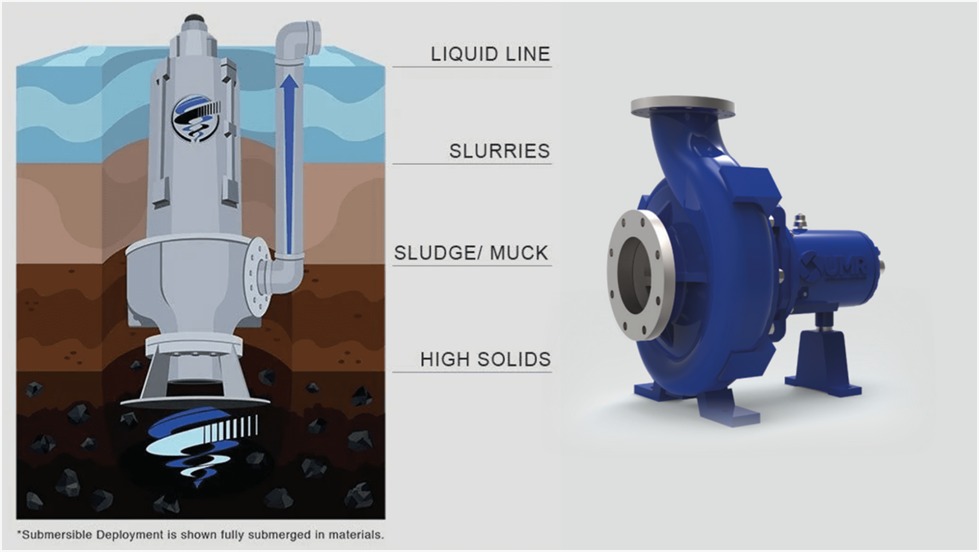Introduction
Submersible pumps are essential hydraulic equipment designed to operate underwater, offering efficient pumping solutions across various industries. From dewatering flooded areas to extracting groundwater and transferring wastewater, these pumps play a crucial role in many applications. This guide provides a comprehensive overview of submerged pump technology, working principles, types, applications, selection criteria, performance optimization, and maintenance strategies.
Understanding Submersible Pump Technology
Submersible pumps are designed to function while fully submerged in liquid. Unlike traditional pumps that rely on suction, submersible pumps push fluid to the surface, reducing energy consumption and improving efficiency. These pumps are sealed to prevent water ingress, ensuring durability and long-term operation in challenging environments.
Working Principles
The fundamental working principle of a submersible pump involves an electric motor driving an impeller, which generates centrifugal force to move liquid. The pump is hermetically sealed with a waterproof casing, preventing leakage and protecting the motor from damage. Since the underwater pump is submerged, it eliminates cavitation issues commonly found in other pump types, resulting in smoother and more reliable performance.
Submersible pumps operate on either single-phase or three-phase electric power, depending on their size and application. Some models incorporate automatic float switches, allowing them to activate and deactivate based on fluid levels, enhancing energy efficiency and system control.
Types of Submersible Pumps
There are various types of submersible pumps, each designed for specific applications:
- Water Pumps – Used for general water transfer, irrigation, and drainage purposes. These pumps are widely used in households, industries, and agricultural applications.
- Borehole Pumps – Ideal for deep well applications where water needs to be lifted from significant depths. These pumps are long and cylindrical, allowing them to fit inside narrow boreholes.
- Oil-Filled Pumps – These pumps have an oil-filled motor for better cooling and lubrication, often used in industrial applications. They are commonly employed in hazardous environments where continuous operation is required.
- Submersible Utility Pumps – Compact pumps used for dewatering and emergency water removal. They are lightweight, portable, and perfect for handling minor flooding or draining pools and basements.
- Booster Pumps – Designed to increase water pressure in residential and industrial settings. They help maintain consistent pressure in water supply systems.
- Bladder Pumps – Used in groundwater sampling and environmental monitoring. These pumps utilize compressed air to move water without direct contact, minimizing contamination risks.
- Grinder Pumps – Commonly used in sewage and wastewater applications, featuring cutting blades to break down solids. They are ideal for pumping waste into sewer systems.
- Deep Well Pumps – Designed for extracting water from deep underground wells, often exceeding 100 feet in depth. These hydraulic equipment pumps are typically multi-stage and provide high pressure.
Applications and Industry Usage
Submersible pumps are widely used across industries, including:
- Mining and Construction – Dewatering flooded sites and excavations to maintain safe working conditions.
- Agriculture – Irrigation and water transfer for farming operations, ensuring a steady water supply for crops.
- Municipal Wastewater Management – Pumping sewage and stormwater from low-lying areas to treatment facilities.
- Oil and Gas – Assisting in crude oil extraction, offshore drilling, and water disposal from drilling operations.
- Industrial Manufacturing – Managing cooling water, chemical processing, and wastewater treatment in factories and processing plants.
- Residential and Commercial Use – Supplying fresh water from wells, maintaining water pressure, and preventing basement flooding.
Selection Criteria and Sizing
Selecting the right submersible pump involves evaluating:
- Flow Rate and Head Requirements – Determines the pump’s capacity and efficiency. Higher flow rates are required for large-scale operations.
- Material Composition – Stainless steel and cast iron options are available to suit different environments, including corrosive and abrasive conditions.
- Motor Power and Voltage – Ensuring compatibility with the power supply and operational needs, particularly for industrial applications.
- Pump Design – Choosing between single-stage or multi-stage designs based on the required depth and pressure.
- Environmental Factors – Corrosion resistance and durability are critical for applications in harsh environments such as marine and wastewater systems.
Performance Optimization
Performance optimization is essential for ensuring the optimal performance and longevity of submersible pumps. Proper installation is critical, as it requires ensuring the correct depth and positioning to prevent dry running and subsequent motor damage. Regular performance monitoring—through checking pressure, flow rates, and electrical load—enables early detection of potential issues.
Additionally, preventing clogging by using appropriate filters and strainers, especially in wastewater applications, is vital to protect impellers from debris. Efficient power management, achieved by employing automation and variable speed controls, helps reduce unnecessary energy consumption and lower operational costs. Finally, ensuring system integration by confirming the pump’s compatibility with existing piping and electrical systems further enhances overall performance.
Maintenance Strategies
Routine maintenance is crucial for extending the lifespan of submersible or underwater pumps. Key strategies include:
- Periodic Inspections – Checking for wear, leaks, and motor efficiency to prevent unexpected breakdowns.
- Cleaning and Debris Removal – Preventing blockages in impellers and filters, ensuring smooth operation.
- Lubrication and Cooling Checks – Ensuring proper functioning of oil-filled and water-lubricated components to prevent overheating.
- Seal and Gasket Replacements – Preventing water intrusion that could damage electrical components, extending motor life.
- Testing Electrical Connections – Identifying and resolving potential wiring or power supply issues to maintain consistent performance.
- Monitoring Submersion Levels – Keeping the pump submerged at the appropriate depth to prevent dry running and overheating.
Conclusion
Submersible pumps are highly efficient and versatile solutions for various water and fluid handling applications. Understanding the submerged pump technology, selecting the right type, and following best practices for maintenance can significantly enhance their performance and lifespan. Whether for industrial, agricultural, municipal, or residential use, investing in quality submersible pumps and proper upkeep ensures optimal efficiency and reliability in any pumping operation. Regular maintenance and correct pump selection will help maximize efficiency, reduce downtime, and extend the life of the pump, ultimately lowering operational costs and increasing productivity.







